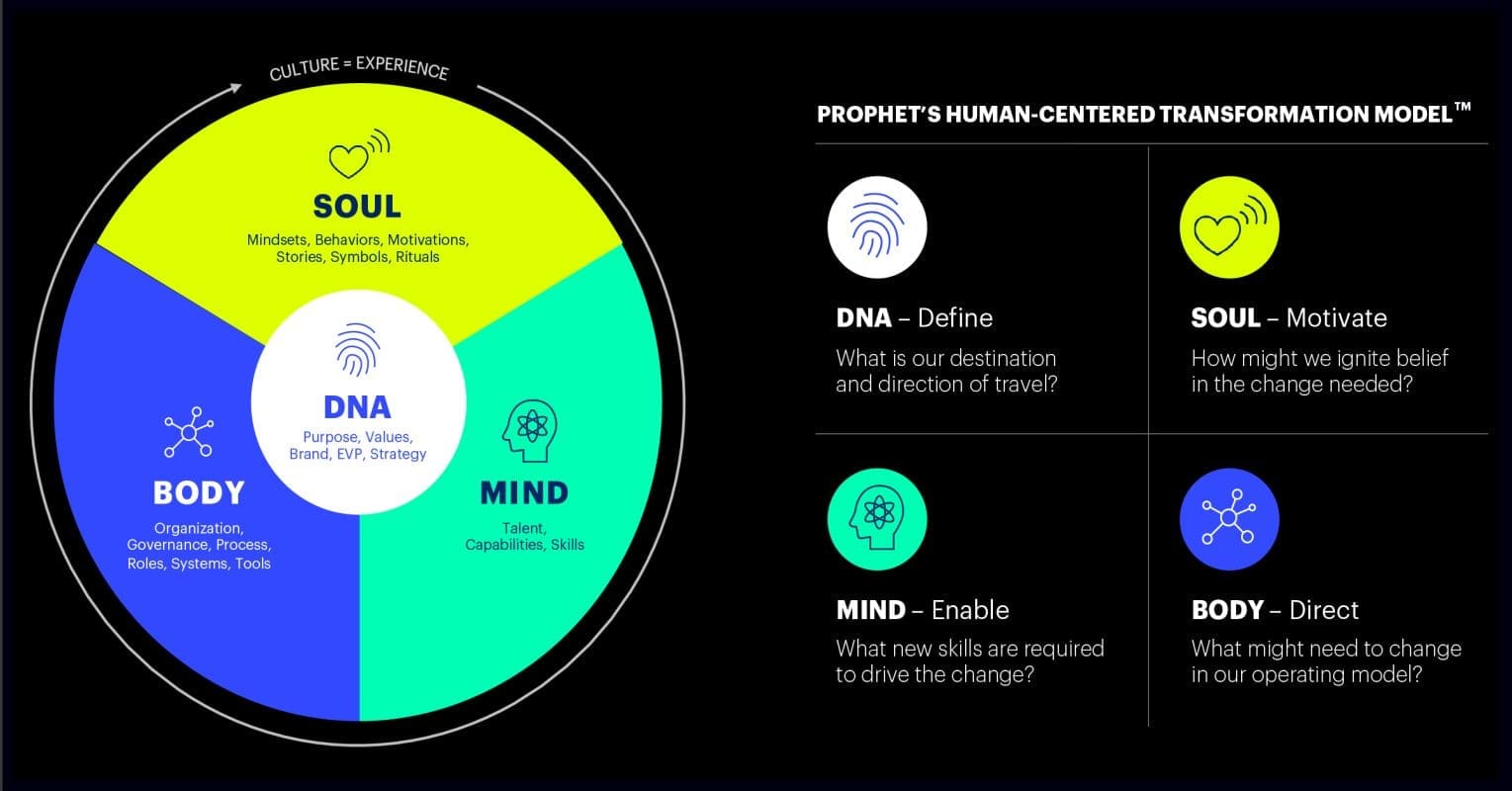BLOG
The Evolved Healthcare Enterprise: An Intro to the Three Archetypes
Are you a transformer, an invader or creator? The answer can change your growth trajectory.
Recently, it was announced that Amazon will start marketing PillPack pharmacy services to Prime members, and healthcare is watching. Today’s digitally-native organizations are inherently more agile than their decades-old competitors. Companies that think about digital differently are focused on driving growth – not just implementing the latest technology.
Evolved Enterprises: Driving Uncommon Growth
Prophet characterizes these companies as evolved enterprises because they are committed to three fundamentals of our digital age to drive uncommon growth. These companies are:
- Customer experience-centric: No matter who their customers are, these companies understand they are in the business of experience and they design their business models explicitly to compete on experience and innovation.
- Building exceptional brands: Because digital businesses are interactive by definition, customers must have positive associations with your brand, which requires a radically reimagined marketing machine.
- Mastering demand-generating capabilities: From aligning and deploying the salesforce to be more effective, to designing and curating martech stacks that are relevant and timely, these organizations know how to be efficient and effective with customer interactions.
- Unleashing the talent of their people: Empowered, autonomous teams at the help organizations operate at the speed of digital. They are fast, flexible and responsive. When grounded in a shared purpose, this freedom unleashes innovation, engages employees and attracts critical talent.
These characteristics have proven to hold true across industries, including healthcare. Many healthcare executives would argue that they are not only true, but most traditional healthcare organizations are lagging behind. Historically, this is largely because healthcare organizations have had a somewhat captured market.
When they were founded, operations were frequently the sole challenge. Whether it was labor-management of a health system, manufacturing and distributing products, underwriting a diverse portfolio of insurance plans, etc., simply getting the work done, was the key challenge. There was a need to be product or service-focused. Digital has changed that, and winning organizations today are customer experience focused (not just customer-focused).
The Three Main Archetypes of Healthcare Consumer-Centricity
In my colleagues Jeff Gourdji and Scott Davis’s latest book, Making the Healthcare Shift: The Transformation to Consumer-Centricity, we see a number of organizations showing promise on their transformation journey. These “transformers” are one archetype of the evolved healthcare enterprises. In the following blog series, we’ll explore the following archetypes of Evolved Healthcare Enterprises that are emerging across the healthcare ecosystem:
Transformers
As mentioned above, these are traditional healthcare organizations seeking to transform and adopt traits of modern Evolved Healthcare Enterprises. These are often companies that fit nicely in the payer, provider, and life sciences sectors Geisinger Health is a great example of a transformer. The Geisinger Medical Center was founded over 100 years ago, as your typical hospital. However, it’s experience-first initiatives such as money-back guarantees and other innovative consumer, clinical, and cost approaches make it an evolved healthcare enterprise in the transformer category.
Creators
These are organizations that start as evolved healthcare enterprises, typically in the last 20 years and are digitally native, and synonymous with start-ups. They sometimes fit within traditional healthcare categories, such as the health insurer, Oscar. Frequently they are creating new sub-categories such as Patients Like Me that provide patient peer groups, helping support each other as well as sharing and discussing a variety of treatment methods that aid in research. Or Exact Sciences and their product Cologuard brings lab testing into the convenience of people’s homes.
Invaders
These are proven evolved enterprises outside of the healthcare industry that are moving in, often grabbing headlines such as Amazon, Apple, and Google. And with good reason, Apple Health Records and its ability to enable more portability of patient medical records is helping to break down EMR silos as patients move through the larger healthcare system. Amazon is now making bonafide medical devices that are HIPAA-compliant. Their “invasion” is quite real and is gaining more momentum every day.
“Companies that think about digital differently are focused on driving growth – not just implementing the latest technology.”
FINAL THOUGHTS
In the subsequent parts of this series, we will dive deeper into each of these archetypes. We will highlight the inherent strengths as well as the disadvantages of each archetype. Regardless of whether you’re a transformer, creator, invader, or none of the above, this series will underscore the amount of change we’re seeing in healthcare today as well as the opportunity the healthcare industry has to unlock growth by by embracing the digital age. Change is here, and it’s coming from everywhere.
Learn more about the ever-changing aspects of impactful healthcare customer experiences.






